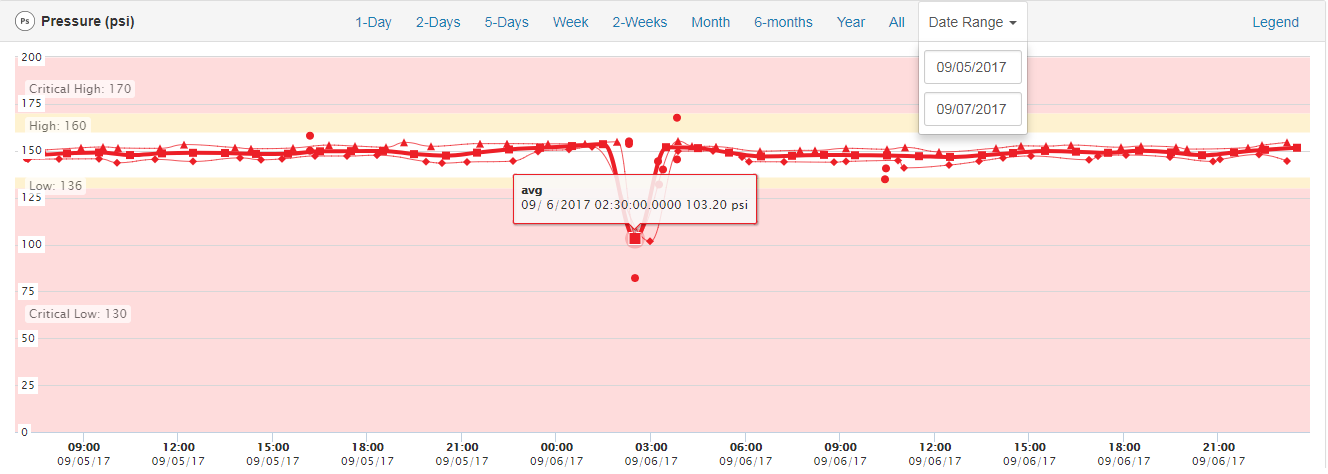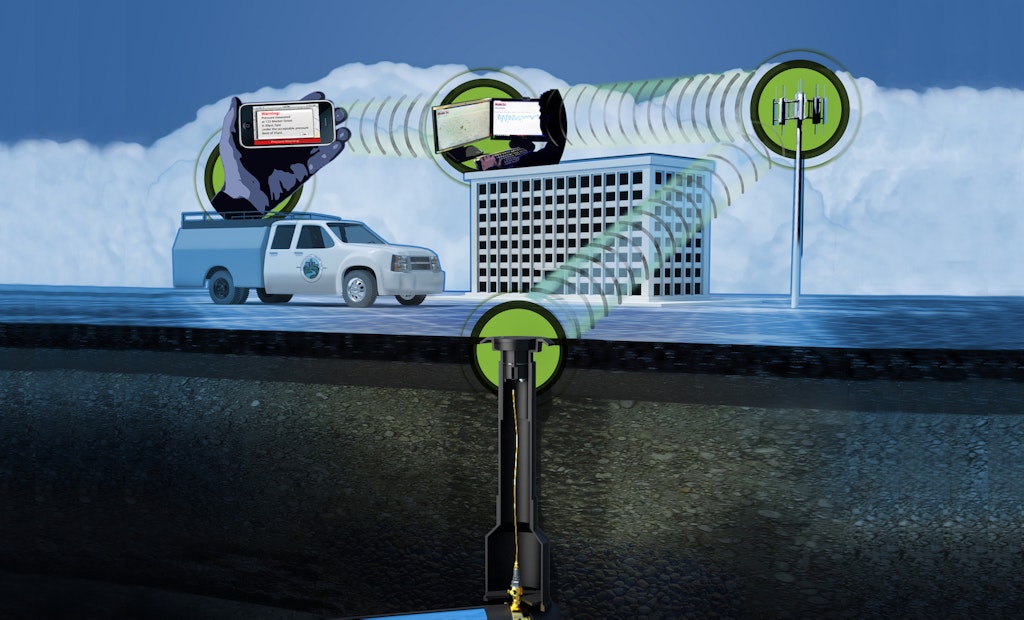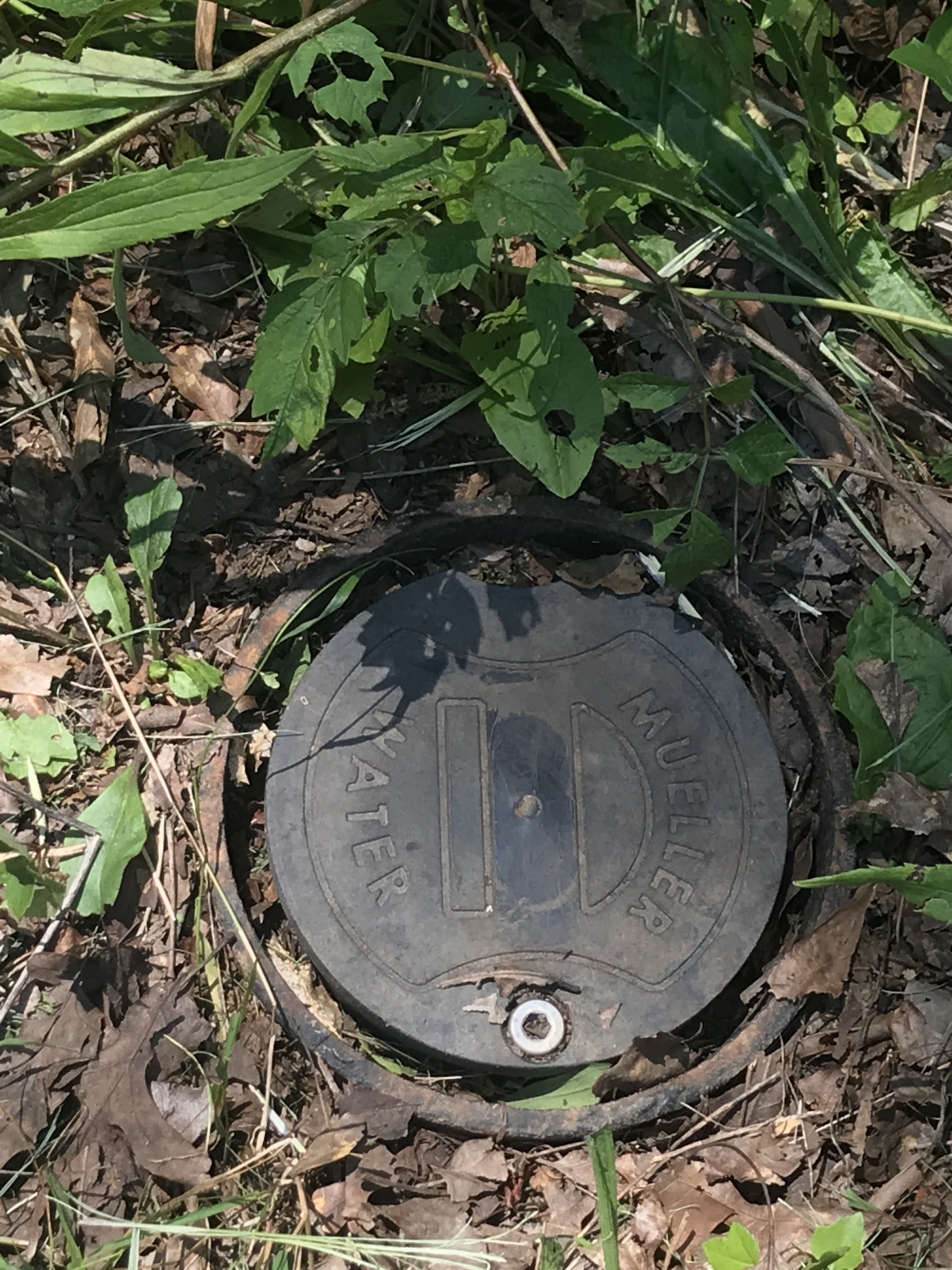Interested in Flow Control?
Get Flow Control articles, news and videos right in your inbox! Sign up now.
Flow Control + Get AlertsHixson, Tennessee, is fortunate to have a great water source from aquifers, coupled with strong leadership, that enables Hixson Utility District to deliver high-quality, low-cost water to its growing population. With close to 500 miles of water mains, they have around 26,000 metered connections and 26 full-time employees responsible for maintaining its distribution system on a daily basis. HUD’s water network is a gravity system so major pressure fluctuations are not expected.
As water distribution manager for HUD, Jeff Elrod is always paying attention to technology advancements that provide better end-user experiences. “With advancements being made in remote cellular pressure monitoring, it became evident to me that we needed a better way to monitor our distribution system outside of the normal techniques the District had in place,” Elrod says.
Most water utilities monitor the physical plants (tanks, pump stations, treatment plants, etc.) but there is much more data that can be captured in a distribution system. Prior to deploying remote cellular pressure sensors, water personnel would travel to sites to manually gather pressure information with gauges or other short-timespan recording devices. This methodology not only takes valuable personnel time, but only provides a snapshot of what is occurring in the system at that precise moment.
Initially, HUD simply wanted to record water pressures without having to visit locations routinely to check pressures using static water pressure gauges on hydrants and faucets.
“Our plan was to install two Mueller Hydro-Guard remote pressure-monitoring sensors as a trial. One sensor was strategically placed to monitor a specific area’s pressure; the second was placed in one of our pressure zones to see what data it would actually provide us,” Elrod says.
One of the advantages of the sensors is that they can be installed anywhere. The first sensor was installed directly into the water main using a corporation stop fitting in an area where they did not have a vacant meter setter. The second sensor was installed in a high priority area that conveniently had a vacant customer connection available. “We simply used adapters and installed the sensor into the existing water meter setter that had not been active in years,” Elrod explains.
Flow tests were then performed in areas monitored by the sensors to simulate different levels of water loss due to a variety of water main break scenarios. The recordings during these simulations were studied to determine when a text alert from the sensors was sent to management, then the severity of the issue could be determined based on the pressure drop. Weekly analysis was performed to study the regular pressure fluctuations during the 24-hour daily-use pattern to determine normal and abnormal fluctuations. After testing and review of the normal pressures in the selected distribution areas, high and low alert points were set to allow the sensors to alert water distribution operators to system anomalies that need to be reviewed.
HUD’s new sensors have provided alerts notifying personnel of water pressure drops in the system that should not occur if the system is operating as planned. These pressure drops coincide with major water usage and or loss.
“Several times the alerts received by the sensors have allowed us the opportunity to put employees in the field to find leaks and turn off water prior to customers notifying us,” Elrod says. This advance notice can save large volumes of treated water by getting staff on the scene to stop a water main break as soon as it is detected and potentially saving further property damage in cases where the leak is in the pavement.
In the water industry there is always the possibility of catastrophic water loss such as a large water main break at night that would go unnoticed by the general public, or a SCADA low-water alarm failure that is supposed to notify the utility in ample time. In these scenarios, thousands of gallons of water have already been lost. A pressure sensor alarm alerting personnel of significant pressure drop allows emergency crews to address the problem before all the water is lost.

“As a person with a data-driven mindset, I was pleasantly surprised with all the analytics that were captured, even within the first month of monitoring. We used this information to plan for system maintenance for an issue we could see developing. Without this data we would have waited for a system event for the issue to be dealt with.” The sensors can be scheduled to upload data to a website multiple times a day and will automatically upload data when an issue is detected.
Sensors are a great way to monitor system components such as pressure reducing valves that regulate pressure zones or district metered areas. “In systems where pressures are greatly influenced by mechanisms such as pressure reducing valves, I see a critical need for a remote method to monitor downstream water pressures more greatly than what we have,” Elrod says.
There are other sensor technologies found in traditional SCADA systems that also have these capabilities, but some small utilities still have limited SCADA implementations. Even those utilities fortunate to have better SCADA capabilities, often have areas where a SCADA sensor is not feasible due to a lack of power or communication lines or terrain obstacles. Cellular technology bridges the gap to monitor water pressures in areas where SCADA monitoring is not a possibility.
Elrod says having the confidence that HUD will be aware of major system issues quicker is the most significant benefit. “The analytics that are continuously provided are also extremely valuable for planning and maintenance purposes. A proactive water management style is needed for the aging distribution systems of today’s infrastructure, and these types of sensors provide the ability to be more proactive and less reactive. Personally, as the individual supervising the distribution system, I would install as many as could be approved by a budget.”
HUD now has four Hydro-Guard pressure monitoring sensors installed with a plan to add two more within the next couple of months.







